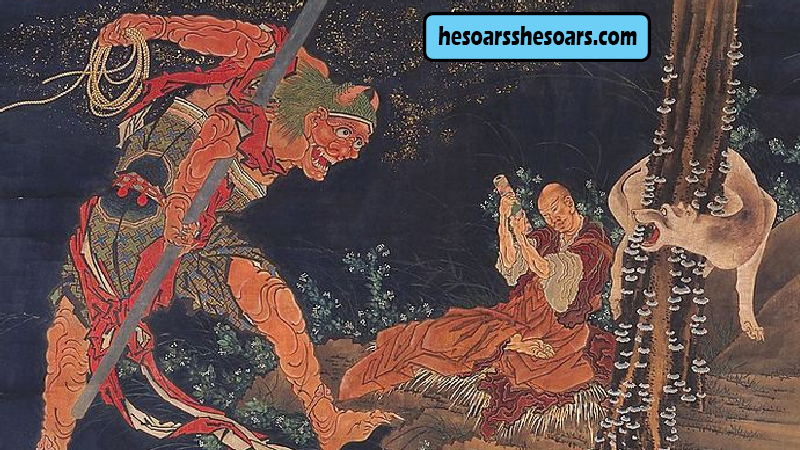Japanese mythology is a treasure trove of fascinating and diverse deities, each with its unique attributes and stories. Kagutsuchi, often referred to as the “Fire God,” is one such deity that plays a significant role in Japanese mythological tales. In this article, we will delve into the mythology of Kagutsuchi, exploring its origins, symbolism, and importance in Japanese culture.
The Birth of Kagutsuchi God
Kagutsuchi’s story begins with the divine beings Izanagi and Izanami. Who were tasked with creating the Japanese archipelago and the pantheon of gods. During their creative endeavors, tragedy struck. While giving birth to Kagutsuchi, the goddess Izanami suffered severe burns, leading to her eventual death. Kagutsuchi’s birth was both miraculous and calamitous, as he emerged from Izanami’s wounds as a powerful fire deity.
Symbolism Kagutsuchi God and Characteristics
Kagutsuchi is primarily associated with fire, particularly the destructive and uncontrollable aspects of it. He is often depicted as a fiery, serpentine creature, spewing flames and wreaking havoc. This connection with fire symbolizes both its creative and destructive powers. As fire can bring warmth and sustenance but also devastation and destruction.
Kagutsuchi in Mythology
One of the most well-known stories involving Kagutsuchi is the death of his mother, Izanami. Following her death, Izanagi was grief-stricken and descended into the underworld to retrieve her. In the underworld, he encountered Izanami, who had transformed into a rotting, monstrous figure. Horrified by her appearance, Izanagi fled, and Izanami pursued him, sending various deities, including Kagutsuchi, to stop him.
In a fit of rage, Kagutsuchi confronted Izanagi and spewed fire at him, ultimately leading to his own demise. This fiery confrontation between father and son highlights Kagutsuchi’s destructive nature and his role in the tragic events surrounding Izanami’s death.
Cultural Significance
Kagutsuchi’s symbolism extends beyond mythology and into various aspects of Japanese culture. Fire has always played a crucial role in Japanese life, from providing warmth and sustenance to being an essential component of religious rituals and festivals. Kagutsuchi’s association with fire reflects the dual nature of fire itself—both a life-sustaining force and a potential source of destruction.
In traditional Japanese rituals, fire is often used to purify and cleanse. A practice that traces its roots back to the symbolism of Kagutsuchi. Fire rituals are conducted to ward off evil spirits and negative influences, as well as to bring blessings and good fortune.
Kagutsuchi in Modern Times
While Kagutsuchi may not be as widely worshipped or revered as some other deities in contemporary Japan, the symbolism of fire and its association with Kagutsuchi persist in various cultural practices. Fire festivals, known as “matsuri,” are celebrated throughout Japan, where fire is a central element in the festivities. These festivals often involve the lighting of massive bonfires and torches, symbolizing the enduring connection between fire and Japanese culture.
Kagutsuchi’s legacy also lives on in popular culture, where references to the Fire God can be found in literature, anime, and other forms of media. His fiery and enigmatic nature continues to capture the imagination of creators and audiences alike.
Conclusion Kagutsuchi God
Kagutsuchi, the Fire God of Japanese mythology, embodies the dual nature of fire as both a creative and destructive force. His role in the tragic events surrounding Izanami’s death and his fiery confrontation with Izanagi highlight his significance in Japanese mythology. While Kagutsuchi may not be as prominent in contemporary worship, his symbolism persists in the cultural practices and traditions of Japan, reminding us of the enduring influence of mythological figures in shaping a nation’s identity and culture.




